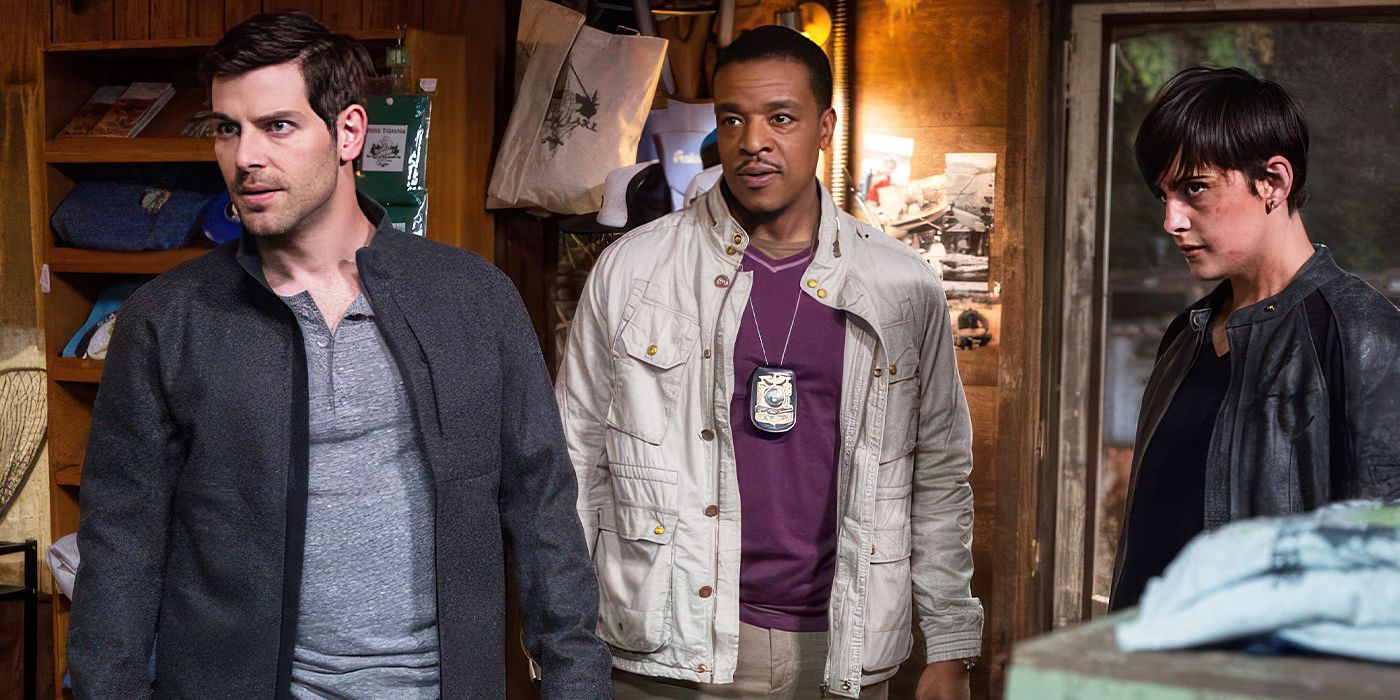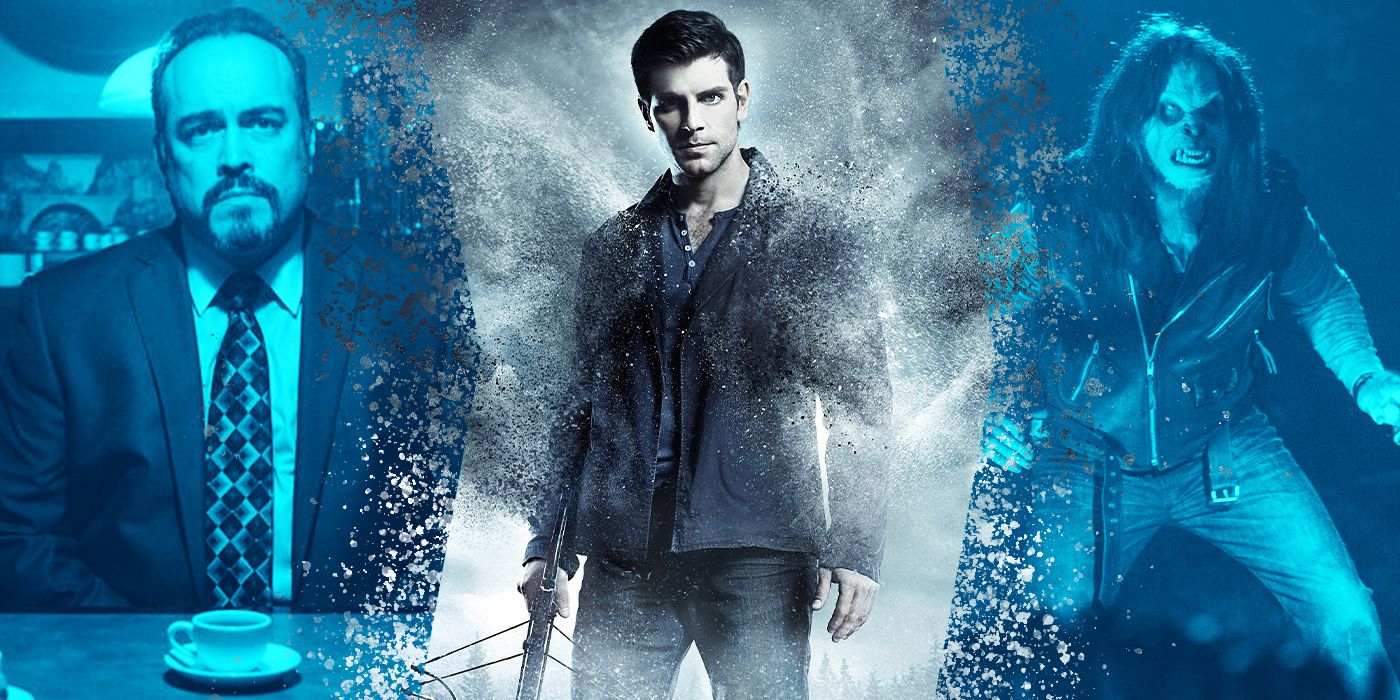You’d think a detective discovering he’s descended from ancient monster hunters would lean into the camp of it all, but Grimm took that premise and went completely dark with it. When it kicked off in 2011, the show was a fantasy procedural, but it quietly morphed into a complex, mythology-rich series that never stopped dishing out surprises. Sure, it gave us the creature-of-the-week format, but it also crafted a brooding supernatural underworld full of conspiracies, bloodlines, rebellions, and centuries-old vendettas. This all unfolds against the backdrop of Portland, Oregon.
At the center of it all is Nick Burkhardt (David Giuntoli), a homicide cop turned reluctant Grimm, whose lineage forces him to confront not just monsters, but his own sense of right and wrong. The deeper the show goes, the more blurred the line becomes between good and evil, human and Wesen, justice and vengeance. And as each season, Grimm further dove headfirst into its lore, drawing viewers into a world where fairy tales were real, and they bled. But it wasn’t all bogeymen and Blutbaden, beneath it all, there was always a slow-burning story about identity, legacy, and the cost of power. For a show that snuck in under the radar, Grimm sure left a shadow long enough to shape the next era of the very specific dark magic TV that included shows like Supernatural and The Magicians.
Nick From ‘Grimm’ Was Juggling Murder Cases and Monster Messes Before It Was Trendy
Forget monster hunters with leather pants and magical swords, Grimm gave us a homicide detective with a badge, a burden, and a major Wesen problem. This was long before Geralt of Rivia grunted his way through courtly politics or Harry Dresden slung spells while solving mysteries. Giuntoli’s Nick Burkhardt was doing both and in a button-down shirt, no less. One of his earliest shockers came in Season 1, Episode 2, “Bears Will Be Bears,” when he’s put on a missing persons case with a Goldilocks and the Three Bears twist of epic proportions. It seems straightforward enough till he realizes that Rocky, the guy he’s looking for, is about to be ritually sacrificed by a family of Jagerbars Wesen reenacting a twisted coming-of-age ceremony in the woods. And he’s supposed to arrest someone for this? Later, in Season 1, Episode 10, “Organ Grinder,” Nick and Hank (Russell Hornsby) investigate missing homeless teens, only to discover they’re being harvested by Geiers for their organs. Needless to say, it’s a lot for anyone to handle, even though he’s seen some dark stuff on the streets.
But, it’s not just the weekly monsters that wear Nick down, it’s the fallout that follows. At some point, his double life starts bleeding into everything, and the people he loves get dragged into the vortex of chaos. Juliette (Elizabeth Tulloch) loses her memory after a Hexenbiest scratch, then spirals into a supernatural identity crisis. Hank nearly loses his mind after too many unexplained Wesen run-ins. And then there’s Sergeant Wu (Reggie Lee), who gets bitten by a Skalengeck and ends up battling lycanthropia — a rage-fueled, were-creature-like condition that transforms him forever. At some point, being a Grimm wasn’t just Nick’s familial responsibility; it became the slow, contagious unraveling of everyone around him.
Every Wesen in ‘Grimm’ Came With Drama Baggage and Species Beef
If you were flipping through Grimm and landed on a Wesen mid-transformation, you’d probably stop, blink, and ask, “Wait… did that man just turn into a porcupine banker?” And the answer would be, yes, he did. In more ways than one, that’s the magic of Grimm. Besides being monsters-of-the-week, the Wesen were deeply weird, weirdly deep, and packed with personality. Each species and each individual felt like someone took a page from a twisted fairy tale, ran it through a crime drama filter, and dropped it in Portland.
The Fuchsbau (fox-like), Blutbad (wolf-ish), and Skalengeck (lizardy creeps) weren’t just spooky to look at; they all came with their own species history, alliances, and ancient beef. Take Monroe (Silas Weir Mitchell), he wasn’t just a reformed Blutbad, he was also a watch repairman with a thing for classical music and vegan brunch. Even the terrifying Ziegevolk had day jobs and relationships, which made their transformations all the more jarring. That blend of creature and character was Grimm’s true secret weapon.
The VFX and practical prosthetics work deserves an award retroactively. Remember the Hexenbiest transformations? Like watching a soap opera villain turn into a corpse in real time. Or the Löwen — basically lion-Wesen who ran underground fighting rings in Season 1, Episode 12, “Last Grimm Standing” — every snarl packed narrative weight. No show on network TV at the time was this committed to making monsters feel real. Meanwhile, Grimm didn’t just show you the beast; it showed you the therapist bills and workplace tension that came with it.
‘Grimm’ Made the Monster-of-the-Week Formula Genuinely Smart Again
You know how most monster-of-the-week shows start feeling like a Scooby-Doo rerun after five episodes? Grimm took the format, but served up a show where every creature mattered and even came with receipts. Instead of throwing in a new Wesen every Friday night, the show gave each one cultural roots, family trees, grudges, and increasingly heavy baggage. Take Season 1’s “Organ Grinder” — a dark, gritty episode featuring Geiers (vulture-like Wesen) harvesting organs from homeless teens. That’s not just creepy body horror; it offered up social commentary wrapped in claws and folklore. Or Season 2, Episode 9 “La Llorona,” which taps into a Latin American legend to deliver one of the show’s most haunting standalones. In a nutshell, it’s a story about loss, guilt, and supernatural grief that doesn’t even involve a Wesen, yet still fits perfectly into the world.
It wasn’t just the monster variety that was clever, it was how each case connected to a real-world issue or a core character’s growth. The Wesen-of-the-week could easily be a metaphor for addiction, abandonment, prejudice, or even depression, and often, they were. At the end of it all, that made the show feel deeper, smarter — like a dark fairytale detective series with emotional teeth. Even when the cases didn’t tie into the main arc, they still taught you something new about Wesen society — the laws, the rituals, the subtle politics. So, rather than just checking off episodes, Grimm was building a weird, wounded world one creature at a time and daring viewers to pay attention.
Stream all episodes of Grimm on Peacock in the U.S.



